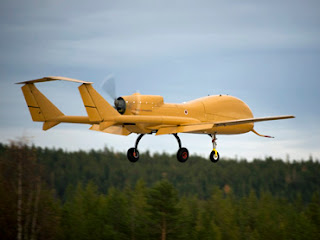Research and development (R&D) in EU member states is focused on medium-sized and larger UAVs and their sensors, as well as on UCAVs. A large part of the UAV R&D is financed by private industry and invariably uses existing technology (including civilian technology) for both the UAV aircraft and the sensors. The UAV programmes are generally aimed at producing operational systems. The more complex and expensive UCAV programmes are more dependent on financing by governments. All current UCAV programmes are technology demonstrator programmes aimed at testing instead of producing an operational UCAV.
Research on tactical, mini, micro and super-micro UAVs is ongoing in many places inside EU countries. These range from government-owned research organisations to practical student and private ventures. Cooperation between different companies or countries in the EU is not very strong. The experience of Eurodrone - a 1980 joint venture between Matra (France) and STN Atlas (Germany) to develop a small tactical UAV (called Brevel or KZO) - seems to sum it all up: brought as a typical French-German cooperative effort, it collapsed when the French pulled out of the project claiming the system was no longer useful, while the Germans went on and finally after 25 years introduced their KZO UAV in 2005.
Several MALE UAV systems are being developed by European companies. Two of these are pure European efforts. BAE (UK) is developing the Herti-1A MALE based on a Polish powered glider airframe. Dassault (France), Alenia (Italy) and Saab (Sweden) agreed in June 2007 to develop a MALE, based on expertise gained from the Neuron project and probably absorbing Alenia’s own Sky-Y MALE technology demonstrator programme. Other European partners are planned and while it is a company initiative, funding from EU governments is sought. It is interesting that the new Dassault/Alenia/Saab programme seems to contradict a 2004 Dassault-EADS agreement whereby Dassault would take responsibility for UCAV and EADS for MALE development. Other programmes are based on Israeli or US technology with different degrees of European input: the French Eagle and the British Watchkeeper programmes use Israeli UAV aircraft with locally-developed payloads; the RQ-1 is assembled in Italy and carries a US-produced payload.
Most recent are EU efforts to develop a HALE UAV. EADS initiated development of an Advanced UAV in 2005 with support from France and Germany, and in 2007 Spain joined the project. A formal development contract, which includes Thales and Indra, is expected soon and the project is open for additional industrial or country participants.











0 comments:
Post a Comment